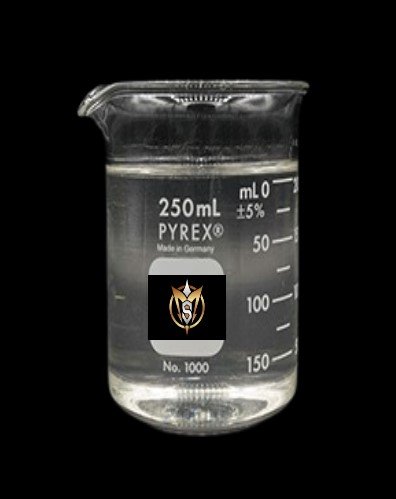Neutral Sodium Silicate Liquid
A vibratory feeder is an instrument that uses vibration to “feed” material to a process or machine. Vibratory feeders use both vibration and gravity to move material. Gravity is used to determine the direction, either down, or down and to a side, and then vibration is used to move the material. They are mainly used to transport a large number of smaller objects. A belt weigher are used only to measure the material flow rate but weigh feeder can measure the flow material and also control or regulate the flow rate by varying the belt conveyor speed.
Neutral Sodium Silicate Liquid
Some of the applications include; use in chemical plant- to control flow of ingredients to mixing tanks, the Food Industry to sprinkle nuts and topping on cakes and ice-cream products.
Foundries for the application of binders and carbon to sand reprocessing system,
Iron and Steel Industry for the controlled flow of limestone, ore and scrap to the smelting furnace.
Pulp & Paper Industry for chemical additive feeding in the bleaching process and chip handling system.
Metal Working Industry for feeding metal parts to heat-treating furnace.
Ceramic Industry for controlled ingredient flow in the batching process.
Glass Industry for handling glass cutlet to the furnace, in the manufacture of glass product .
Chemical Additive handling, such as lime and diatomaceous earth, in water and sewage treatment plants.
1)Motorised Vibratory feeder
General Characteristics :
Length : up to 7 m long
Width : up to 3 m depending on the capacity
Motors : top / bottom / sides
Installation : hanged up or set on the floor
Capacity : up to 2000 m3 / h
Features : low acceleration and high travel
Trough : opened or closed (dustproof covering)
Adj.capacity : 30 to 100% with variable frequency transmission
Voltage : 230 – 380 V / 50-60 Hz (other: please consult us)
Options : machines hanged up or set on the floor, with or without HR coating steel or special (synthetic rubber …). Mounting inclination of 0 ° to 10 °.
Advantages : regular capacity quantity and the possibility of change in motion by slavery to frequency according to different parameters.Low power consumption, long lifetime, low maintenance.
Vibratory feeders is suitable for metal and coal feeding system. The materials will be discharged evenly on to the belt conveyor from bunker by using vibratory feeders and will form in to a appropriate thickness and width of material layer. Applicable materials can be coal, ore, sandstone, sandy soil and other powder raw materials in food and chemical plant.
The characteristics of the vibratory feeders mainly include the following parts:
1. It can easily control the discharge capacity. You can also control the discharge capacity (tons/hour) by using a inverter.
2. It applies to a wide range of materials, such as powder, granule, block and other materials.
3. Low maintenance cost , because of adopting resonance principle, so the vibration feeder has less power consumption and less we a characteristics.
4. It can be used in special conditions: according to different working condition, the vibrating feeder can be equipped with dust cover, liner plate, sealing part etc.
5. Smooth vibration and reliable operation.
6. Special grid design which can prevent material blockage. The clearance between grids can be adjustable.
7.Frequency conversion motor is optional, you can change the capacity by adjusting the motor frequency which is easy to control the feeding rate without starting motor frequently
2) Tube Feeder
This Vibrating Tube Feeder conveys crushed aggregate to a bulk storage silo. It can also be used to convey other types of bulk materials like powders, bulk solids and crushed glass. The enclosed design prevents foreign materials from entering the product stream. A variable frequency drive is used to control the feed rate as needed for downstream production requirements.
It is suspended in place by steel cables connected to a structure above. Isolation springs prevent transfer of energy from the feeder to the cables and structure. Abrasion Resistant liners can also be used with this feeder.
vibrating tubular feeders with unbalanced motors are used for bin extraction and for conveying of bulk material. These units are extremely effective when used to convey dusty material. Inlet and outlet can be sealed off by means of elastic sleeves. The vibrating tubular feeders are manufactured in a welded design, driven by two unbalanced motors.
Advantages
- long feeder lengths achievable
- high feed rate
- dustproof
- low electric power consumption
- low maintenance
- long lifetime
- silent operation
3) Reciprocating Feeder
Type : Reciprocating Vibration Feeder
Material : Anthracite, Soft Coal, Lignite, etc.
Floor travel : 50-200mm
Application : mining, coal preparation plant, transfer station, coal handling plant, bulk transport of bulk materials in port, etc.
DESCRIPTION
Reciprocating feeder (coal feeder) make the coal or other abrasive, sticky little loose granular, powdery material from the feeding device evenly unloaded into material receiving device. The equipment body is installed under the hopper, Driving device is a suspension type, according to the size of the feed amount can be divided
Application:
Reciprocating feeder (coal feeder) suitable for mining, mine, coal preparation plant, transfer station, coal handling plant, Bulk transport of bulk materials in port and so on.
1. Long life, light weight, small size, easy maintenance.
2. The structure is simple, reliable operation, convenient adjustment and installation.
3. Use closed frame structure, greatly improve the rigidity of the frame.
4. Can start with full load, has overload protection.
5. High carrying capacity, high transmission efficiency.
6. Greatly reducing the leakage of material.
7. The whole machine is balanced, and the transmission is stable.
8. The floor has vertical ribs, prevent bending deformation in bottom feeder.
9. Liner board by a small piece of wear-resistant steel plate together, make rational use of materials, reduce maintenance costs






